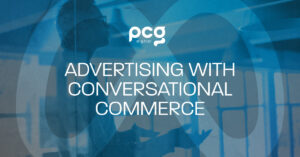People consume media and entertainment content today from so many channels that it’s hard to keep track of how many there actually are. TV, radio, social media, internet, billboards – and often they are consuming information from these sources at the same time. Sit in front of the TV and scroll through Facebook. Listen to the radio while using WAZE to navigate to destination while passing billboard after billboard. It seems as though the consumption of media in our lives is never ending.
Marketing and advertising messages that appear on all these channels about a single product, service or company is a multi-channel approach, but may not be an integrated multi-channel marketing strategy. For it to have that label, all the channels and the messages that appear on each must have a singular voice, leading to a singular experience. Too often in automotive and RV marketing, we miss that point. We have offers on Facebook, but brand messages on OTV. The radio is talking about a special tent sale, but Google searches only say we have cars in stock. A lot of inconsistency. That’s one of the keys to multi-channel marketing: consistency.
Here's how to plan a multi-channel marketing strategy
- 1. Identity your customer.
- Who is my customer? Middle income families with 2.5 kids? High earners with a lot of disposable income? Tradesmen whose family vehicle is also their work vehicle? Where are they coming from? 10 miles away? 30 miles away? Look in your CRM. See who has bought from you in the past. See what they bought and where they came from. Look around your showroom. Who’s in there buying or shopping. Look at all the information available to you in Google Analytics. What type of mobile phone are they using?
- 2. Create a singular message that can work across channels.
- Develop a language, vocabulary, and imagery for your brand and your offers that can be used at the top of the shopping funnel when consumers are browsing/considering and at the bottom of the funnel when they see the deal that they want to make.
- 3. Integrate the experience across channels.
- Whatever it is that you are advertising, make sure it all points back to a single point – the conversion. Customers can convert into a sale in a variety of places, not just on your website. More and more, customers are converting directly on Facebook or on Google Business Profiles. While we’d love for them to have a uniformed experience on our website, it’s less and less likely to happen now. Our online presence has de-centralized so it’s imperative that the message we want consumers to hear, and the experience we want them to interact with is consistent, integrated, and shared on every channel.
- 4. Be consistent AND flexible.
- Are you going to be advertising offers on TikTok? No. Is Facebook retargeting my branding ad going to drive interest in my lease deals? No. But if I use the same language and similar images across ads (branding or offers) I will have a consistency that hits consumers at various points in the shopping funnel and helps them align brand and offers with my business. So that branding ad on TikTok let’s people know that when they’re ready to purchase I have the experience they are looking for. And after they’ve visited my website, browsing my inventory, that Facebook inventory retargeting ads reminds them that I have a vehicle they want, at the right price, and with an experience they’ll be happy with.
- 5. Track using the same (or similar) KPIs.
- Google Analytics is how you track performance on your marketing and advertising. No other way. However, Google Analytics is not the end all be all. It has trouble tracking Facebook ad campaigns, mainly because Facebook doesn’t like its users leaving its platform. Keep that in mind as you put together your advertising tactics. But that doesn’t mean I can’t have the same key performance indicators. If I want as many people to see my ads as possible, focus on Google Analytics “users” and Facebook “reach.” If I want to drive hard conversions (phone calls, chats, texts, etc.), focus on Google Analytic “goal conversions” and On-Facebook destination “conversions.”
Truth be told, multi-channel marketing is not revolutionary. It’s hard to find a business that’s using one single marketing and advertising channel. Every marketing and advertising vendor will have their clients running at least Google paid search and Facebook AIA. But just because you have ads on multiple channels doesn’t mean it’s a multi-channel strategy. Following the steps above will help bring in that consistency that integrates your marketing into a cohesive approach that works across channels.
Why do you need a multi-channel marketing strategy? If you’re reading this while watching TV, while asking Amazon’s Alexa to order something, and thinking about sharing this article on Facebook, Twitter, or LinkedIn…then you’ve already answered the question. You just need to take the steps to make it all work together. To learn more about creating a multi-channel marketing strategy contact the PCG Digital team today!

Michael Stewart


Drive Your Meta Advertising Strategy Using Conversational Commerce

